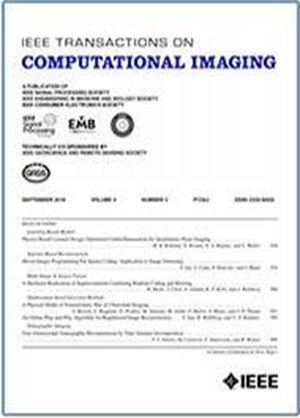Unrolling Reweighted Total Variation-Based Split Bregman Iterative Framework for Electrical Impedance Tomography Image Reconstruction
IF 4.8
2区 计算机科学
Q2 ENGINEERING, ELECTRICAL & ELECTRONIC
引用次数: 0
Abstract
Electrical impedance tomography (EIT) is one of the typical ill-posed inverse problems, where serious ill-posedness and the linear approximation of the forward operator lead to obvious distortions and artifacts in the degraded reconstructions, further limiting its practical application. The learning-based strategies with image enhancement have been introduced into EIT reconstruction and also achieved improvements. Nevertheless, this idea ignores the priori knowledge of physical information, while not fully exploiting data consistency, resulting in poor generalization and interpretability. In this work, a reweighted Split Bregman (SB) iterative algorithm is proposed regularized by total variation firstly, referred to as RwTVSB. Moreover, the RwTVSB iteration is unrolled into a neural network-based learning framework, dubbed as RwTVSB-Net. The reweighted matrix is introduced to the SB iteration, which could overcome the loss of information of the forward operator due to the linear approximation and also enhance the constraints of the physical priori. Specifically, (1) a network based on residual connection and SE-attention is designed to update the reweighted matrix. (2) Further, a U-shaped architecture with deformable large kernel convolution, dilated convolution, and cross-attention is embedded into this unrolling framework to learn the soft threshold operator. This not only maintains consistency with the RwTVSB iterative algorithm but also uses multi-scale features to fusion information at multiple levels. Both simulated and real-world measured data are employed to validate the effectiveness and advantages of the proposed RwTVSB-Net. The visual reconstructions and quantitative metrics show that RwTVSB-Net outperforms other state-of-the-art methods. In addition, the robustness of the method is tested and validated on multiple imaging tasks.电阻抗层析成像图像重建的展开重加权总变分分裂Bregman迭代框架
电阻抗层析成像(EIT)是典型的病态逆问题之一,严重的病态性和正演算子的线性逼近导致退化重建结果出现明显的畸变和伪影,进一步限制了其实际应用。将基于学习的图像增强策略引入到EIT重构中,也取得了一定的效果。然而,这种想法忽略了物理信息的先验知识,而没有充分利用数据一致性,导致泛化和可解释性差。本文提出了一种基于总变分正则化的重加权Split Bregman (SB)迭代算法,称为RwTVSB。此外,RwTVSB迭代被展开成一个基于神经网络的学习框架,称为RwTVSB- net。在SB迭代中引入重加权矩阵,克服了正演算子由于线性逼近而造成的信息损失,增强了物理先验的约束。具体而言,(1)设计基于残差连接和SE-attention的网络来更新重加权矩阵。(2)进一步,在该展开框架中嵌入可变形大核卷积、扩展卷积和交叉关注的u型结构,学习软阈值算子。这既保持了与RwTVSB迭代算法的一致性,又利用多尺度特征实现了多层次信息融合。仿真和实测数据验证了RwTVSB-Net的有效性和优越性。视觉重建和定量指标表明,RwTVSB-Net优于其他最先进的方法。此外,在多个成像任务中对该方法的鲁棒性进行了测试和验证。
本文章由计算机程序翻译,如有差异,请以英文原文为准。
求助全文
约1分钟内获得全文
求助全文
来源期刊

IEEE Transactions on Computational Imaging
Mathematics-Computational Mathematics
CiteScore
8.20
自引率
7.40%
发文量
59
期刊介绍:
The IEEE Transactions on Computational Imaging will publish articles where computation plays an integral role in the image formation process. Papers will cover all areas of computational imaging ranging from fundamental theoretical methods to the latest innovative computational imaging system designs. Topics of interest will include advanced algorithms and mathematical techniques, model-based data inversion, methods for image and signal recovery from sparse and incomplete data, techniques for non-traditional sensing of image data, methods for dynamic information acquisition and extraction from imaging sensors, software and hardware for efficient computation in imaging systems, and highly novel imaging system design.
 求助内容:
求助内容: 应助结果提醒方式:
应助结果提醒方式:


